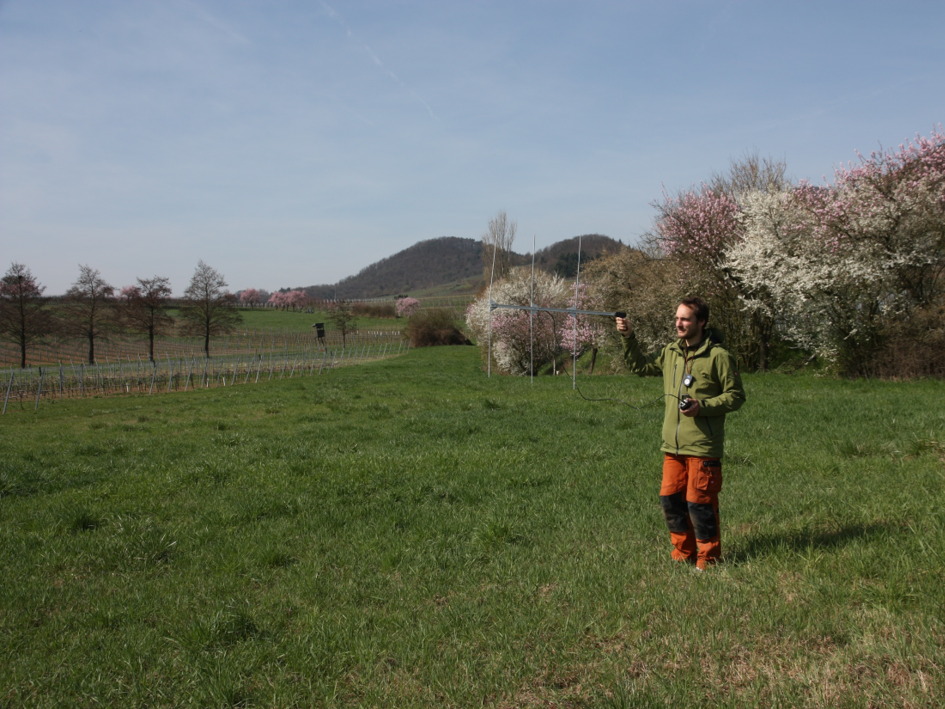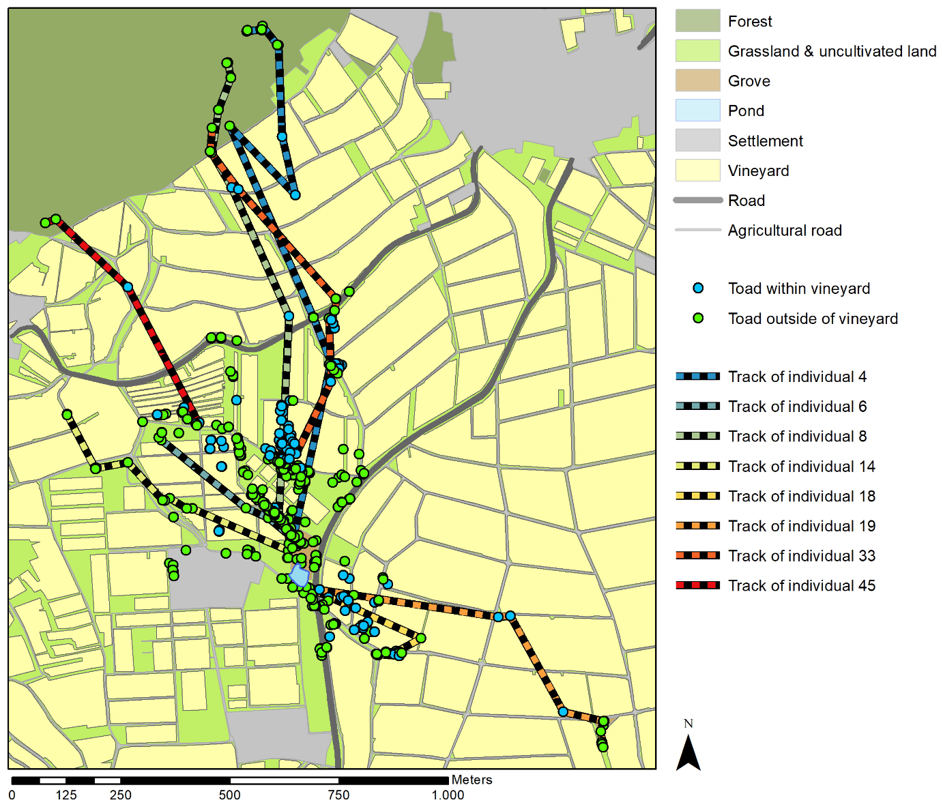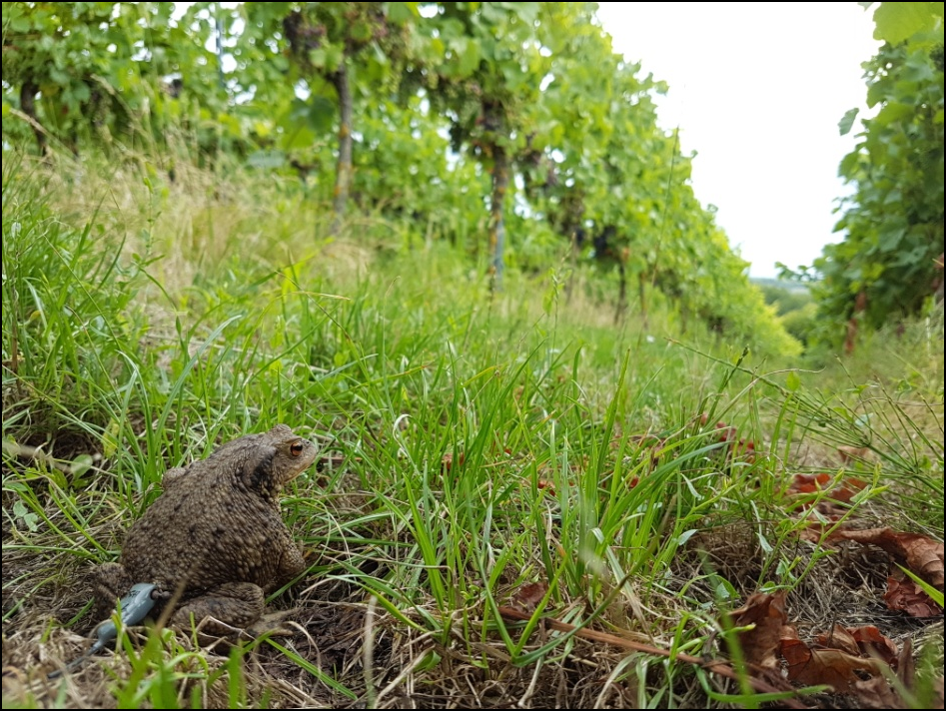In this post, Christoph Leeb talks about his recently published paper on amphibian presence in a vineyard in Southern Germany and potential exposure risk to pesticides.
Amphibian populations are declining on a global scale and today 40% of all amphibian species are considered endangered. Some of the main drivers for this decline are climate change, invasive species, habitat destruction, and chemical pollutions. The last two factors are often linked to the intensification of agriculture since the 1950s.
Agriculture is representing the dominant landscape type in many areas of the world and today about 40% of the area of the European Union and 48% of Germany is agriculturally used. As breeding ponds of European amphibians are often located within or near agricultures, amphibians can be found within agriculture during their pre- or post-breeding migration and are therefore possibly exposed to pesticides. However, there are too few data on the terrestrial habitat use of amphibians in agricultural landscapes to estimate the actual exposure risk.

To fill this knowledge gap, we investigated the post-breeding migration of common toads (Bufo bufo). The common toad is one of the most common amphibian species in Europe and can often be found within agriculture. Although this species is not considered endangered on an international or national level, population declines have been reported on a local level in the entire distribution area.
To study the post-breeding migration we used telemetry, so we attached a small radio transmitter around the waist of a toad and relocated the individual with the help of a receiver and an antenna on a daily basis. The study was conducted between March and September 2017 in Siebeldingen (Southern Palatinate; Germany) where B. bufo uses a permanent rain retention pond for reproduction. The landscape around the pond is dominated by vineyards, a very intensive kind of agriculture with on average 9.5 pesticide applications per year.

We expected most toads to migrate to the nearby Palatinate Forest as a terrestrial habitat. However, only four of 51 tracked individuals reached the forest, suggesting that a part of the population is inhabiting the agricultural landscape over large parts of the year. Individuals were also found directly in the vineyards (15% of all relocations), but 23% less often than expected from a random choice and therefore tend to avoid vineyards as terrestrial habitat.
To estimate a possible spatial–temporal overlap of toad migration and pesticide application, we combined telemetry data with information about pesticide applications from local wine growers. Seven individuals had a high probability (>75%) of being directly exposed to a pesticide application. Taking spray drift and the half-life values of applied pesticides into account, the number of toads potentially exposed raised to 15 individuals. We estimated that on a single day up to 24% of the whole breeding population came in contact with pesticides, resulting in a high overall exposure risk.

Pesticides can have negative effects on amphibians, and toads try to avoid vineyards as habitats. Therefore, we conclude that a heterogeneous cultural landscape, with buffer strips around ponds, uncultivated patches, and migration corridors, might be the best management measure for sustaining amphibians in the agricultural landscape.
The paper “Potential pesticide exposure during the post-breeding migration of the common toad (Bufo bufo) in a vineyard dominated landscape” was authored by Christoph Leeb, Carsten Brühl and Kathrin Theissinger, and published in Science of the Total Environment.
